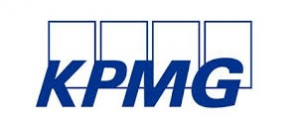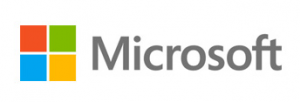OFFICE MARKET: The Resilient Workplace by Mr. Tamás Kovács
3.02.2017Company: Steelcase Czech Republic s.r.o
“What are the issues that keep leaders up at night?”, asked Mr. Tamás Kovács in the beginning of his presentation about Engagement and the Resilient Workplace. “Growing a business”, was the immediate answer from the audience.
(article based on notes from the discussion on Top Trends in Real Estate held at AmCham on 31 January 2017)
One of the key elements to growth is how the organization responds to challenges. But how do you create an organization that grows in the face challenges, such as market conditions, retaining talent, global integration? “We - and many business oriented organizations out there - believe it’s about employee engagement,” claimed Mr. Kovács.
Engaged employees are often defined as those who go beyond what is asked of them to help the company succeed. These employees are critical to the success of an organization. In fact, research from Gallup shows that companies with larger numbers of engaged employees outperform competition, have higher productivity, higher profitability, lower turnover, less absenteeism and fewer safety accidents. Conversely, companies with disengaged employees not only experience lower profitability, a larger proportion of their workforce is emotionally disconnected, less productive and bring hostile and toxic energy to the organization and those around them. (Source: 2013 State of the Global Workplace Report, Gallup)
“Can the workplace help?”, asked then Mr. Kovács his audience. “At Steelcase we’ve also been exploring this issue of engagement for several years and we believe there’s another variable that many organizations hadn’t thought about – the places where people work.”
It´s a well-known fact that physical surroundings can shape people’s behaviors and attitudes about their overall experience at work. But at Steelcase they wanted to go deeper to really understand the issue of engagement of people at work. They conducted a study together with Ipsos, the global research firm, in 17 countries with over 12,000 respondents.
The study uncovered five key insights about the factors that impact workplace satisfaction and employee wellbeing which are leading to employee engagement.
- More than one in three workers is disengaged. Within an organization, the number of disengaged office workers (37%) slightly outnumbers the engaged (34%). 29% of workers in the middle-ground make then a tipping point within the organization. Due to this precarious balancing act, it’s possible that the group of disengaged workers can effectively cancel out the efforts of engaged ones.
“This being said, the good news is that now we know there’s a relationship between how people feel about their office and how engaged they are, so we can begin to design a workplace that is more likely to help people feel good about their work experience”, added Mr. Kovács to this finding.
- Employee engagement positively correlates with workplace satisfaction. In other words, people who are happy with their workplace tend to be more engaged and the other way around. (Here it´s important to mention that the two factors of engagement and workplace satisfaction are correlated, but we cannot claim a causal relationship.)
- Engaged employees have more control over their experiences at work. For example, the most highly engaged workers are likely to be able to choose where to work in the office based on the task they need to do. 88% of the group of highly engaged workers had this option. On the other hand, only 14% of highly disengaged workers had the same flexibility. As you can see, empowering people to make decisions about where they can do their best work within the office is one strategy organizations can use to help with engagement.
- Fixed technology exceeds mobile 2:1. The study found that employers were twice as likely to provide fixed technology as mobile. This trend does vary by country and there are a lot of reasons why fixed technology is so prevalent, but the point is – if organizations want to give employees an ability to choose and control over where and how they work, technology can be an enabler or a constraint.
- Traditional work styles persist. The research showed that the vast majority of offices around the world are traditional, made up of a lot of private offices where works 60% of people. This is in contrast to just 33% who have assigned spaces in the open plan. And only 8% are nomads, working in a variety of spaces within the office.
The research also found that the most highly engaged employees tend to hail from emerging economies, such as India, Mexico and the United Arab Emirates. Meanwhile, the countries with the lowest engagement levels often came from well-established markets, such as France, Spain and Belgium.
“Work is changing. People need to work in different ways at different times and organizations should ask themselves if the physical environment is keeping up with those changing ways of work. And if not, that can have an impact on engagement and workplace satisfaction”, continued Mr. Kovács.
The research emphasizes the importance of engagement and the impact of the workplace. Engaged people come to work energized and ready to generate new ideas. They’re flexible and adaptive – they are resilient.
Resilient organizations have the capacity to maintain their core purpose and integrity in the face of dramatically changed circumstances. Resilience is critical to survival and growth of an organization. Therefore, so many organizations are building a Resilient Workplace.
The Resilient Workplace is focused on the relationship between people’s wellbeing (from a holistic perspective) and place (as an ecosystem of spaces, and like those found in nature, which can evolve and change to suit the different needs of people).
When considering people, we have to take care of their physical wellbeing (supporting movement throughout the day and encouraging healthy postures that help people stay comfortable), cognitive wellbeing (supporting the need for focus and rejuvenation through spaces where individuals and teams can concentrate easily), and finally, emotional wellbeing (support for the social nature of work by creating spaces that foster connections between people).
“People aren’t just doing one thing all day long. They’re shifting from different modes of work, such as focused individual work, to collaboration. They’re learning from co-workers, and having social interactions. During a hectic day, they also need times rejuvenate and gather their thoughts or just take a breath”, explained Mr. Kovács.
Therefore, it’s tough for one type of space to support all those different things people need to do.
In addition to designing for employee’s wellbeing, organizations need to create their workplace as an ecosystem which needs to encourage movement throughout the day and provide choices for people to change postures – to sit, stand, lounge or walk. The ecosystem needs to help people manage their presence – meaning people can be present both physically in the room with teammates, and virtually with colleagues. And it needs to give people different spaces to manage their privacy, so they can focus or have a private conversation.
Business Growth → Employee Engagement → Resilient Workplace
“In summary, for business leaders who are focused on growth, employee engagement is a critical issue that must be improved. We believe the way to solve this is to see the office not as a location, but a destination”, finished Mr. Kovács his speech.
To download the full presentation – click here.
Tags: Real Estate | Human Resources |






